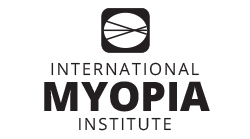
 This summary of an International Myopia Institute (IMI) white paper was created by and is used with permission from the Centre for Ocular Research & Education (CORE) at the University of Waterloo’s School of Optometry & Vision Science in Waterloo, Ontario, Canada. It originally appeared in the April 2019 issue of Contact Lens Update, CORE’s free access online resource.
This summary of an International Myopia Institute (IMI) white paper was created by and is used with permission from the Centre for Ocular Research & Education (CORE) at the University of Waterloo’s School of Optometry & Vision Science in Waterloo, Ontario, Canada. It originally appeared in the April 2019 issue of Contact Lens Update, CORE’s free access online resource.
 The increasing prevalence of myopia around the world and the associated long-term health risks have long been cause for concern among health care professionals. The International Myopia Institute (IMI) was founded in 2015 to make the information on myopia accessible and easy to understand for patients and health care professionals. A team of more than 85 international, multidisciplinary experts have collaborated since then to develop the IMI white papers that are available for free at www.iovs.arvojournals.org now.
The increasing prevalence of myopia around the world and the associated long-term health risks have long been cause for concern among health care professionals. The International Myopia Institute (IMI) was founded in 2015 to make the information on myopia accessible and easy to understand for patients and health care professionals. A team of more than 85 international, multidisciplinary experts have collaborated since then to develop the IMI white papers that are available for free at www.iovs.arvojournals.org now.
Background to the Need for Myopia Control
Refractive development:
Typically, a gradual shift in refractive development from low level hyperopia to emmetropia can be observed from birth to ages of 5 to 7, with cases of myopia in these age groups being very rare.
Myopia onset:
While myopia onset in children younger than six years is generally low world-wide, the incidence of myopia increases dramatically in children older than that, with significant differences between East-Asian and White populations.1 Factors such as a myopic shift and acceleration of axial elongation have been found to precede the onset of myopia by up to 4 years; thus, these factors may be helpful variables for myopia onset prediction models like the ones described in IMI – Defining and Classifying Myopia Report.
Myopia progression:
An understanding of myopia progression rates and when to expect larger yearly changes is crucial for myopia control. A review of the literature showed that myopia progression rates were typically found to be larger in younger children (6-9 year olds; -0.50D to -1.00D progression rate/year), while children older than that were generally found to have smaller progression rates of -0.35D to -0.75D/year.
High myopia:
Relatively little research is available on accurate identification of those myopes who may be at a higher risk of developing high myopia. Based on the currently available information, age of myopia onset as well as duration of myopia progression appear to be most suitable for this task.
Adult-onset myopia and progression:
While juvenile-onset myopia is typically of more concern to eye care professionals due to its potential to cause sight-threatening pathologies, some patients may experience myopia onset or progression in their adult years only. Adult-onset myopia or progression are often associated with intense near work (e.g. in students) or those patients with higher degrees of myopia.
Genetic and environmental risk:
Genetics and environmental conditions are highly relevant to the understanding of the onset and progression of myopia. Myopia onset has been linked to genetic risk factors such as parental history of myopia or differences in sex (females being more at risk than males), while time spent outdoors and amount of near work are key environmental factors associated with myopia onset. Country and location of residency are also important environmental factors, with a higher incidence of myopia in those living in urban centers. It is unclear at this stage whether binocular vision attributes are of benefit in myopic risk assessments.
The research on myopia progression is less extensive compared to studies on its onset. Studies or meta-analyses of hereditary or personal characteristics showed varied findings. Some researchers report differences in progression depending on ethnicity, or related to parental myopia, that were not discovered in other studies looking at the same risk factors. Near work as well as urbanization and increasing family income are environmental factors found to be closely associated with myopia progression.
In summary, the likelihood of myopia progression to sight-threatening levels is higher in those children with an earlier onset of myopia. Therefore, both myopia onset and progression should be addressed at as young an age as possible.
The 7 IMI white papers
Based on these observations, the following seven white papers were developed:
- IMI – Defining and Classifying Myopia Report
- IMI – Experimental Models of Emmetropization and Myopia Report
- IMI – Myopia Genetics Report
- IMI – Interventions for Controlling Myopia Onset and Progression Report
- IMI – Clinical Myopia Control Trials and Instrumentation Report
- IMI – Industry Guidelines and Ethical Considerations for Myopia Control Report
- IMI – Clinical Myopia Management Guidelines Report
REFERENCES
- Rudnicka AR, Kapetanakis VV, Wathern AK, Logan NS, Gilmartin B, Whincup PH, Cook DG, Owen CG. Global variations and time trends in the prevalence of childhood myopia, a systematic review and quantitative meta-analysis: implications for aetiology and early prevention. Br J Ophthalmol 2016;100:882-90.
Other CORE summaries of IMI White Papers
All the International Myopia Institute White Papers
CORE’s Contact Lens Update, a free online resource











